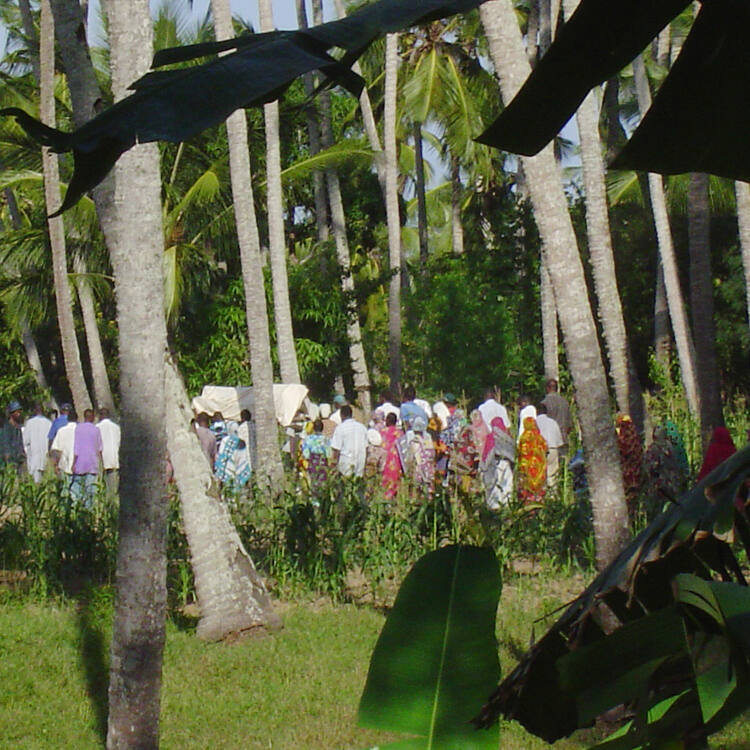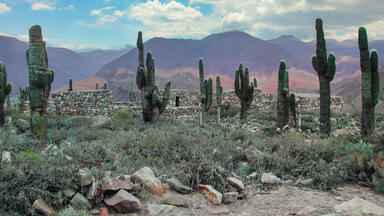Sacred Mijikenda Kaya Forests
Sacred Mijikenda Kaya Forests
The Mijikenda Kaya Forests consist of 10 separate forest sites spread over some 200 km along the coast containing the remains of numerous fortified villages, known as kayas, of the Mijikenda people. The kayas, created as of the 16th century but abandoned by the 1940s, are now regarded as the abodes of ancestors and are revered as sacred sites and, as such, are maintained as by councils of elders. The site is inscribed as bearing unique testimony to a cultural tradition and for its direct link to a living tradition.
Description is available under license CC-BY-SA IGO 3.0
Forêts sacrées de kayas des Mijikenda
Les forêts sacrées de kaya des Mijikenda consistent en 10 sites forestiers distincts qui s''étendent sur près de 200 km le long de la côte. Ils recèlent les vestiges de nombreux villages fortifiés, les kayas, du peuple Mijikenda. Les kayas, créés à partir du XVIème siècle ont été abandonnés dans les années 1940. Ils sont considérés aujourd''hui comme les demeures des ancêtres, révérés comme des sites sacrés et entretenus par les conseils d''anciens. Le site est inscrit en tant que témoignage unique d''une tradition culturelle et pour ses liens directs avec une tradition vivante.
Description is available under license CC-BY-SA IGO 3.0
غابات كايا ميجيكندا المقدسة
تشمل 10 موقعاً، وتبلغ مساحتها 200 كلم تقريباً على طول الساحل. فيها آثار لعدد من القرى المحصنة، المسماة "كايا"، والتي يتميز بها شعب ميجيكندا. أنشئت قرى "كايا" بدءاً من القرن السادس عشر، وأصبحت مهجورة في عام 1940. لكنها تعتبر اليوم بيوت الأسلاف ومواقع مقدسة تحرص الأجيال المتعاقبة على الاعتناء بها. وقد أدرج الموقع بوصفه شهادة فريدة عن تقليد ثقافي ولارتباطه المباشر بتقليد حي.
source: UNESCO/CPE
Description is available under license CC-BY-SA IGO 3.0
Леса кайя Миджикенда
состоят из 10 отдельных поселений, расположенных вдоль двухсоткилометровой береговой линии, где еще сохранились остатки многочисленных укрепленных деревень, называемых кайя, племени Миджикенда. Строительство кайя началось в XVI веке, а прекратилось в 40-е годы прошлого века. Местные жители полагают, что в них пребывают их предки, поэтому чтят кайя как святыни. Только советам старейшин дано право следить за их содержанием. Объект занесен в Список как уникальный памятник традиционной культуры, тесно связанной с современными традициями.
source: UNESCO/CPE
Description is available under license CC-BY-SA IGO 3.0
Bosques sagrados y kayas de los mijikenda
El sitio inscrito consta de 10 sitios independientes diseminados a lo largo de 200 km de costa. Muy ricos en vegetación, contienen los vestigios de numerosos pueblos fortificados, conocidos como kayas, del pueblo Mijikenda. Los kayas, creados en el siglo XVI pero abandonados en los años 1940, se consideran ahora morada de los ancestros y son venerados como sitios sagrados por parte de los consejos de ancianos. El sitio se inscribe como un testimonio único de una tradición cultural y su relación directa con una tradición todavía viva.
source: UNESCO/CPE
Description is available under license CC-BY-SA IGO 3.0
ミジケンダの聖なるカヤの森林
ケニアのインド洋沿岸200㎞にわたって広がる森林は「カヤ」と呼ばれ、この一帯に住むミジケンダの人々にとって聖域である。一般的なカヤは、森林の中に円形の防御柵を設け、石壁と木製ドアを備えた入り口をもち、周囲には住居を配している。これらは16世紀、他民族に追われてこの地に住み着いたミジケンダの人々が、神聖な墓所や森を守るために築いたものである。1940年代までに放棄されたが、現在も精霊の住む森として崇められており、長老の寄り合いに使用されることによって維持されている。ミジケンダの人びとの独自の伝統文化が現在も守られている場所として、一帯に点在する11のカヤが世界遺産に登録された。source: NFUAJ
Heilige Kaya bossen van Mijikenda
De heilige Kaya bossen van Mijikenda bestaan uit 10 afzonderlijke bosgebieden verspreid over ongeveer 200 kilometer langs de kust. Ze bevatten overblijfselen van een groot aantal versterkte dorpen – bekend als kayas – van de Mijikenda gemeenschap. De kayas werden gebouwd vanaf de 16e eeuw, maar verlaten in de jaren '40 van de vorige eeuw. Er zijn meer dan dertig kayas overgebleven. De Mijikenda zien ze als verblijfplaatsen van voorouders en vereren ze als heilige plaatsen. Ze onderhouden het bos rond de kayas om deze plaatsen te beschermen. De bosgebieden zijn bijna de enige overblijfselen van dit eens zo uitgestrekte kustbosgebied.
Source: unesco.nl
Outstanding Universal Value
Spread out along around 200km of the coast province of Kenya are ten separate forested sites, mostly on low hills, ranging in size from 30 to around 300 ha, in which are the remains of fortified villages, Kayas, of the Mijikenda people. They represent more than thirty surviving Kayas.
The Kayas began to fall out of use in the early 20th century and are now revered as the repositories of spiritual beliefs of the Mijikenda people and are seen as the sacred abode of their ancestors.
The forest around the Kayas have been nurtured by the Mijikenda community to protect the sacred graves and groves and are now almost the only remains of the once extensive coastal lowland forest.
Criterion (iii): The Kayas provide focal points for Mijikenda religious beliefs and practices, are regarded as the ancestral homes of the different Mijikenda peoples, and are held to be sacred places. As such they have metonymic significance to Mijikenda and are a fundamental source of Mijikenda’s sense of ‘being-in-the-world’ and of place within the cultural landscape of contemporary Kenya. They are seen as a defining characteristic of Mijikenda identity.
Criterion (v): Since their abandonment as preferred places of settlement, Kayas have been transferred from the domestic aspect of the Mijikenda landscape to its spiritual sphere. As part of this process, certain restrictions were placed on access and the utilisation of natural forest resources. As a direct consequence of this, the biodiversity of the Kayas and forests surrounding them has been sustained. The Kayas are under threat both externally and from within Mijikenda society through the decline of traditional knowledge and respect for practices.
Criterion (vi): The Kayas are now the repositories of spiritual beliefs of the Mijikenda and are seen as the sacred abode of their ancestors. As a collection of sites spread over a large area, they are associated with beliefs of local and national significance, and possibly regional significance as the sites extend beyond the boundaries of Kenya.
The Kayas demonstrate authenticity but aspects associated with traditional practices are highly vulnerable. The integrity of the Kayas relates to the intactness of their forest surroundings which has been compromised for Kaya Kinondo.
Management needs to respect the needs of individual Kayas and to integrate the conservation of natural and cultural resources and traditional and non-traditional management practices; the authority of the Kaya elders should be established.



